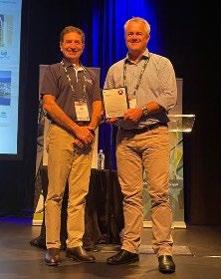ASSET MANAGEMENT
WATER ASSETS KEY TO WATER QUALITY
Desire Gralton
The Queensland water industry – and indeed water service providers across the country – are facing an infrastructure cliff that places communities’ health and safety at risk as ageing infrastructure deteriorates and needs to be replaced. Local Government owns and operates over $40 Billion of water and wastewater assets, providing services to 4.3 million people across 370 communities.
Figure 1: Over 22,000 km of asbestos cement (AC) water mains were installed between the 1960s and 90s leaving a cohort of pipes that will soon reach the end of their expected life.
The growth of the Queensland water industry accelerated after World War II and a large number the 42,000 km of water pipes and 35,500 km of wastewater pipes were installed by the 1970s. Installation has continued at a relatively steady pace since then. Recent research, funded through the Queensland Water Regional Alliances Program (QWRAP), has shown that the average expected lifetime for many pipes is around 70 years, especially the asbestos pipes that were common in the early days of Queensland’s expansion. This means that nearly 3000 km of Queensland’s pipe network is currently beyond its expected life and this number will grow to 10,000 km by 2040. Ageing pipes cause increasing breaks, blockages, bursts, sinkholes and disruptive and expensive “reactive repairs”. Without a concerted effort the research predicts that pipe
44
Figure 2: Modelled total annual breaks (in blue) are slightly higher than reported annual breaks (in red) but are projected to increase rapidly from the 2020s (Source: Cosgrove and Fearon, 2017).
breakages will rapidly increase over the next two decades, to be over four times higher than the present levels. Replacement of existing pipes is costly, although costs can be reduced by carefully prioritising pipes that are most at risk and careful management (e.g. through proactive repairs, pressure management and pipe relining). Ageing cannot
be avoided forever but an infrastructure cliff (estimated to exceed $3 billion by 2040) caused by leaving all replacement to the last minute, can be avoided through focused early action. Investment key to the future The Queensland Government is working with councils and other water service providers to avoid drinking water quality risks through increased investment
ENGINEERING FOR PUBLIC WORKS | MARCH 2021



























